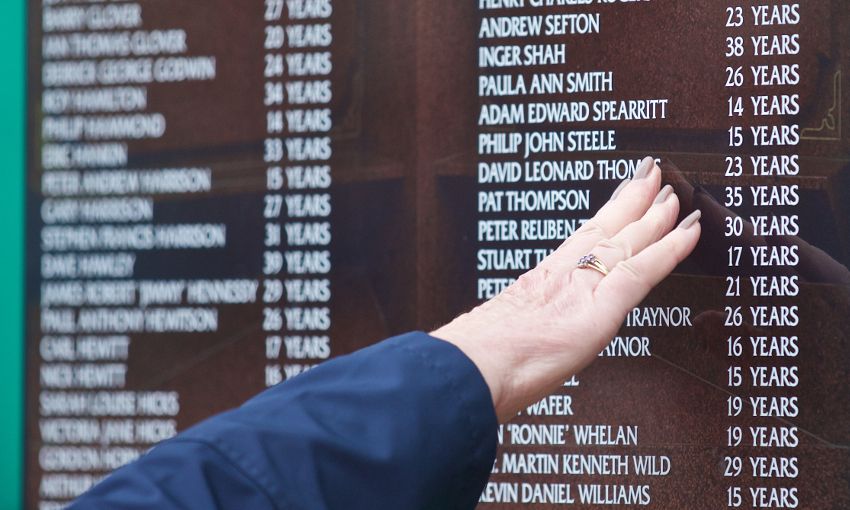Hillsborough inquests - November 13
The Hillsborough inquests commenced on March 31, 2014 and are the subject of reporting restrictions that have been imposed by the Attorney General's office. Liverpool Football Club is respectful of these restrictions and will therefore only be making available updates from other media channels for the duration of the inquest.

The report below - and the witness testimony contained within it - does not necessarily reflect the views of Liverpool FC. Please be aware that the reports on these pages will contain evidence about the day of the disaster which may be distressing.
To view archive reports from each day of the inquest hearings, click here.
Courtesy of the Liverpool Echo - November 13
The Hillsborough inquests heard more medical evidence on the final moments of five of the victims of the stadium disaster, and the desperate attempts to save them after they were pulled from the crush.
The jury at Birchwood Park, Warrington, heard testimony from intensive care experts on Gary Collins aged 22, Brian Matthews, 38; Paul Murray, 14; Raymond Chapman, 50 and Roy Pemberton, aged 23.
A number of pathologists also gave a cause of death for each of the victims as well as a time frame during which they are believed to have died.
Gary Collins, from Bootle, was described as being the sole Liverpool FC supporter in a family of Evertonians.
Pathologist Dr Nat Cary said that on the day of the disaster, Gary had been towards the front of pen three “in a fairly lethal area”.
The court heard that numerous attempts were made to revive Gary once he was dragged on to the pitch from the crush of bodies at the Leppings Lane end of the stadium, but to no avail.
This included being given oxygen from a bottle, delivered via a face mask.
Chest compressions were carried out for a “substantial period of time”, but with no change in his condition.
Dr Jasmeet Soar, an expert in intensive care, said the likelihood that Gary had merely been unconscious, and that signs of a pulse and breathing were missed, was “vanishingly small.”
A male doctor at the gymnasium pronounced “life extinct” at 4.04pm, a little over an hour from the time when Gary was last seen alive.
The jury also heard about Brian Matthews, a financial consultant from Knowsley Village.
Professor Jerry Nolan, an expert in intensive care, said a large number of people were involved in treating Brian after he was brought on to the pitch. This included “high-quality” chest compressions and continuous mouth-to-mouth resuscitation.
The jury was told that if vital signs were present, these efforts would have been effective.
Dr Soar said that an “airway” device - which was requested but was not available - “probably wouldn’t have made a difference”.
The youngest of the victims about whom evidence was given today was 14-year-old Paul Murray, from Stoke-on-Trent, who travelled to the match with his dad Anthony.
Paul was last seen alive as he was sent “tumbling” down the Leppings Lane terrace soon after he arrived at the stadium.
When he was taken on to the pitch, his colour was described as “pale candle wax.”
Pathologist Professor Jack Crane said Paul’s injuries were consistent with him being knocked over or falling to the ground, with pressure probably being applied to his body from other people who had fallen on top of him.
Dad-of-two Raymond Chapman, from Prenton, Wirral, unusually received CPR treatment at both the Leppings Lane end and after he was moved to the Kop end of the stadium.
Prof Nolan said there appeared to have been three episodes of CPR on Raymond. He said the initial chest compressions seemed to be “reasonably appropriate,” but it was difficult to be certain about the quality of later CPR attempts.
He added it was most likely that Raymond was dead before he was moved from the Leppings Lane to the Kop end of the pitch.
Pathologists used the term of compression asphyxia to describe the cause of all the deaths they discussed today.
The uniform term was used to describe all of the various mechanisms which could have led to death as a result of the crush.
The jury heard that it was difficult to piece together the final moments of Roy Pemberton, 23, from Hunts Cross, because of the “fragmentary” nature of the evidence.
One of those carrying Roy on to the pitch said it was obvious to him that Roy was dead.
One of the medical experts, Prof Jerry Nolan, said it was “most likely” that Roy was in cardiorespiratory arrest on the basis that he was lying motionless on the pitch, but there was still an element of doubt about this.
There were no known attempts to resuscitate Roy, and it was not possible to be more certain about the time of his death other than it happened at some time between 2.57pm and shortly after 4pm.
Forensic pathologist Dr Nat Cary said it was possible Roy could have been forced up against a firm structure, such as a barrier. He said his injuries were consistent with having been involved in a crush, and he could have fallen to the ground.



